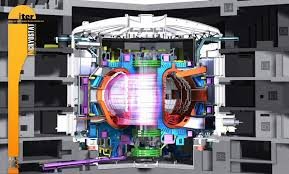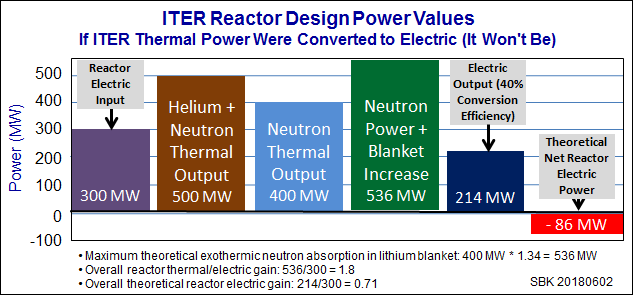27. Atkins Company Removes False ITER and JET Fusion Power Claims

Oct. 25, 2018 – By Steven B. Krivit –
In response to a letter from New Energy Times to Richard Lyall, the Atkins nuclear major projects director, the Atkins company has removed a false and misleading claim about the most powerful fusion experiment, performed at the JET reactor in the U.K. in 1997. It has also removed a similar claim about the expected results of the $22 billion ITER reactor, now under construction in southern France.
Atkins is a U.K.-based engineering and design consultancy that is responsible for building the infrastructure at the International Thermonuclear Experimental Reactor site. In April 2010, Atkins was awarded a €150 million contract from the European ITER domestic agency known as Fusion for Energy.
On Oct. 2, 2014, Atkins displayed a slide presentation to financial analysts and investors and claimed that the ITER reactor is designed to produce 500 MW of output power for 50MW of input power and that the best fusion result so far, from the JET reactor, produced 16 MW of thermal power.
ITER will, in fact, consume at least 300 MW of electricity to produce that 500 MW of thermal power. If all goes well, the equivalent net power of the ITER reactor will result in a loss of 86 MW, which is not enough for an engineering breakeven. It will, however, be a significant improvement over JET, which had a net loss of 684 MW.

Atkins had published the false claims on its Web site at this url and in this downloadable PDF (revised PDF) until receiving this letter from New Energy Times. New Energy Times sent the letter to Lyall, Julianne Antrobus, the Atkins Nuclear director, and Martin Grant, the Atkins chief executive officer for energy. In response to the letter, Atkins did not dispute, argue or discuss the discrepancy with New Energy Times. The Atkins company simply and silently deleted the false claims.
New Energy Times has tracked how fusion scientists have, for decades, failed to disclose the full amount of input power required by JET and failed to disclose the full power that will be required for ITER. As shown by this document, fusion scientists deceived the Atkins directors into thinking that, “if successful, the [ITER] facility will deliver nuclear fusion on a commercial scale offering safe, limitless and environmentally responsible energy.”
Fusion scientists used a double meaning of the phrase “fusion power” without informing people outside the fusion research community about the double meaning. Misled by fusion scientists, Atkins, in turn, misled financial analysts and investors about the expected power from ITER.

Slide #20 from Oct. 2, 2014, Atkins presentation to financial analysts and investors depicting false projections for ITER and false results from JET

